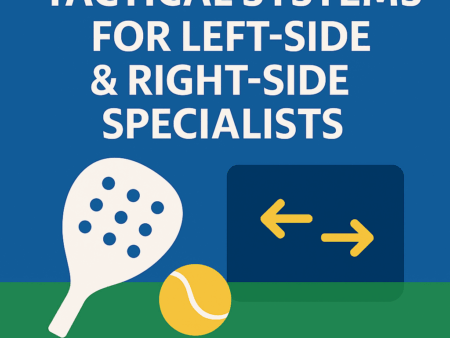Padel is a doubles-only sport, which means communication isn’t optional — it’s essential. The best teams aren’t always the strongest or fastest. They’re the ones who communicate clearly, cover each other’s spaces & make quick decisions together.
This guide explains how to communicate better with your Padel partner, whether you’re total beginners or improving players.
1. Use Simple, Clear Commands
You don’t need long sentences during fast rallies.
Use short, sharp words that your partner can hear instantly.
The core commands:
- “Mine!” → You’re taking the shot
- “Yours!” → They should take it
- “Leave!” → Let the ball bounce off the wall
- “Switch!” → Swap sides
- “Lob!” → You’re lifting the ball
- “Up!” → Move forward
- “Back!” → Move backward
These simple calls reduce confusion & prevent both players from going for the same ball.
2. Talk Before Every Point
Good communication starts before the ball is served.
Discuss things like:
- Who covers the middle
- Where you plan to return
- Whether you’ll attempt a chiquita
- Who takes lobs on each side
A quick 1–2 second chat creates structure & confidence.
3. Decide Who Owns the Middle
Most points are won or lost in the center of the court.
The basic rule:
The player in front or with the forehand usually takes the middle ball.
But you must agree on this together.
A confident “Mine!” avoids hesitation — the biggest cause of errors.
4. Keep Talking During the Point
Strong teams communicate constantly, not just at the start.
During rallies, say:
- “Short!” → Opponents hit soft
- “Deep!” → They hit long
- “Back glass!” → Prepare for the rebound
- “Switch!” → Avoid crossing paths
- “Good!” → Encouragement boosts confidence
The more information you share, the smoother your teamwork becomes.
5. Encourage Each Other (It Matters More Than You Think)
Padel is emotional.
Players get frustrated, lose confidence & make silly mistakes when stressed.
Encouragement keeps your partner calm & focused.
Use phrases like:
- “Nice try!”
- “Good idea!”
- “We’ve got this.”
- “Great shot!”
Positive energy wins more matches than you think.
6. Move as a Connected Unit
Communication isn’t just talking — it’s movement.
Golden rule:
Move together, forward or backward, side by side.
This keeps your court coverage strong.
If one player moves forward at the net while the other stays back, big gaps open & opponents win easy points.
7. Tell Your Partner What You Need
Many amateurs stay silent when something isn’t working.
Speak up kindly & clearly.
Examples:
- “Can you cover the middle more?”
- “Let’s use more lobs.”
- “Let’s slow the pace down.”
- “I’ll take the overheads today.”
Simple adjustments improve your strategy instantly.
8. Agree on Strengths & Weaknesses
Every player has them.
You should both know what they are.
Examples:
- One player may be better at lobs
- One may prefer taking bandejas
- One may struggle with wall shots
- One may be great at chiquitas
Knowing each other’s strengths helps you build a winning game plan.
9. Use Hand Signals at the Net (Optional But Very Effective)
Hand signals behind the back can communicate strategy quickly.
Common signals:
- Open hand: You stay
- Closed fist: You switch
- One finger: Serve wide
- Two fingers: Serve to the body
This is a pro-level habit, but even beginners benefit from it.
10. Always Reset Communication After Errors
After a mistake, briefly connect:
- Eye contact
- A tap on the racket
- A quick “It’s fine, next one”
Resetting helps keep tension low & teamwork strong.
🎯 Quick Summary
To communicate better with your Padel partner:
- Use short, clear commands
- Talk before every point
- Decide who covers the middle
- Communicate constantly during rallies
- Encourage each other
- Move as a unit
- Share strengths & weaknesses
- Reset after mistakes
Great communication transforms average pairs into strong, confident teams.


